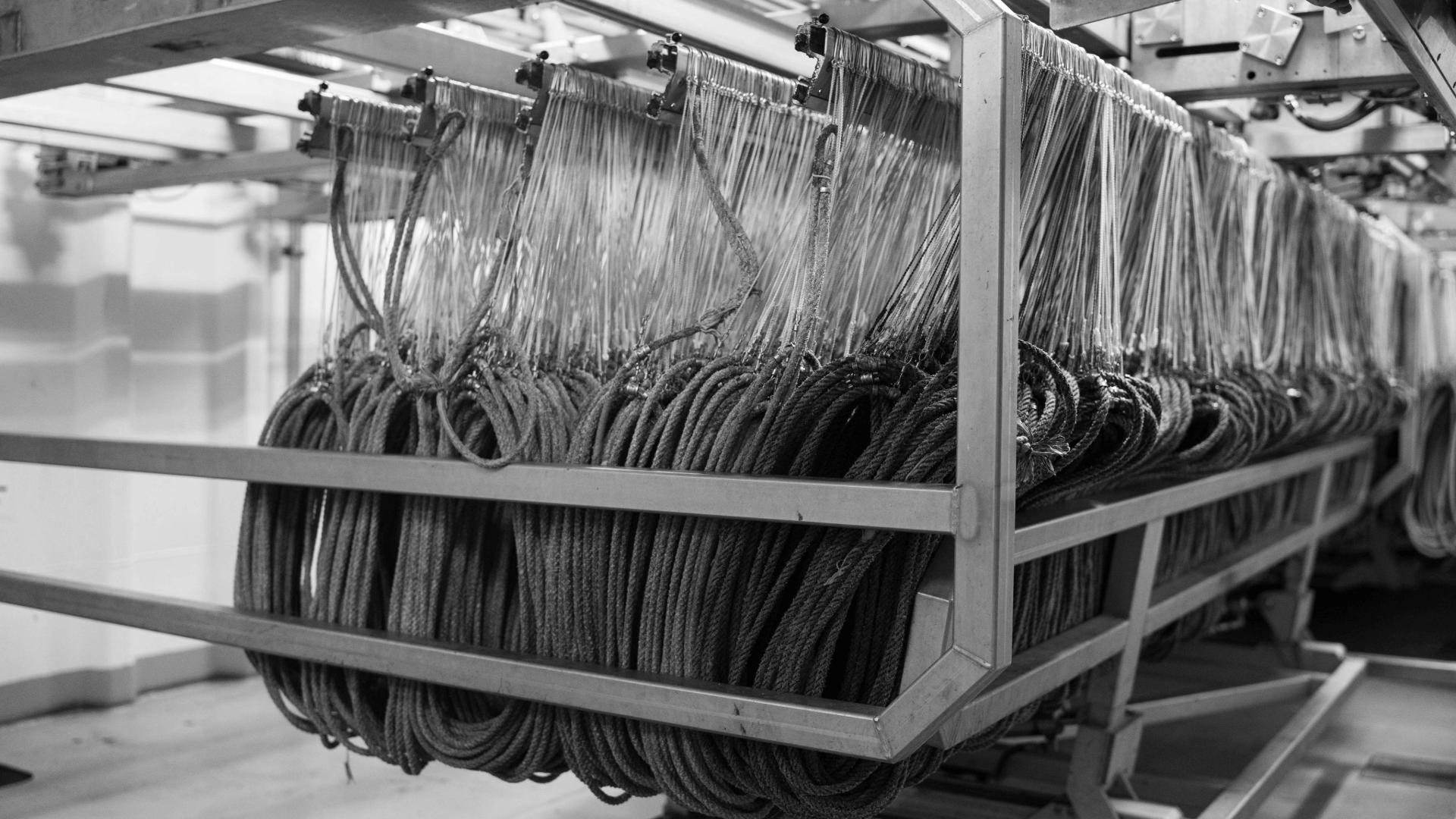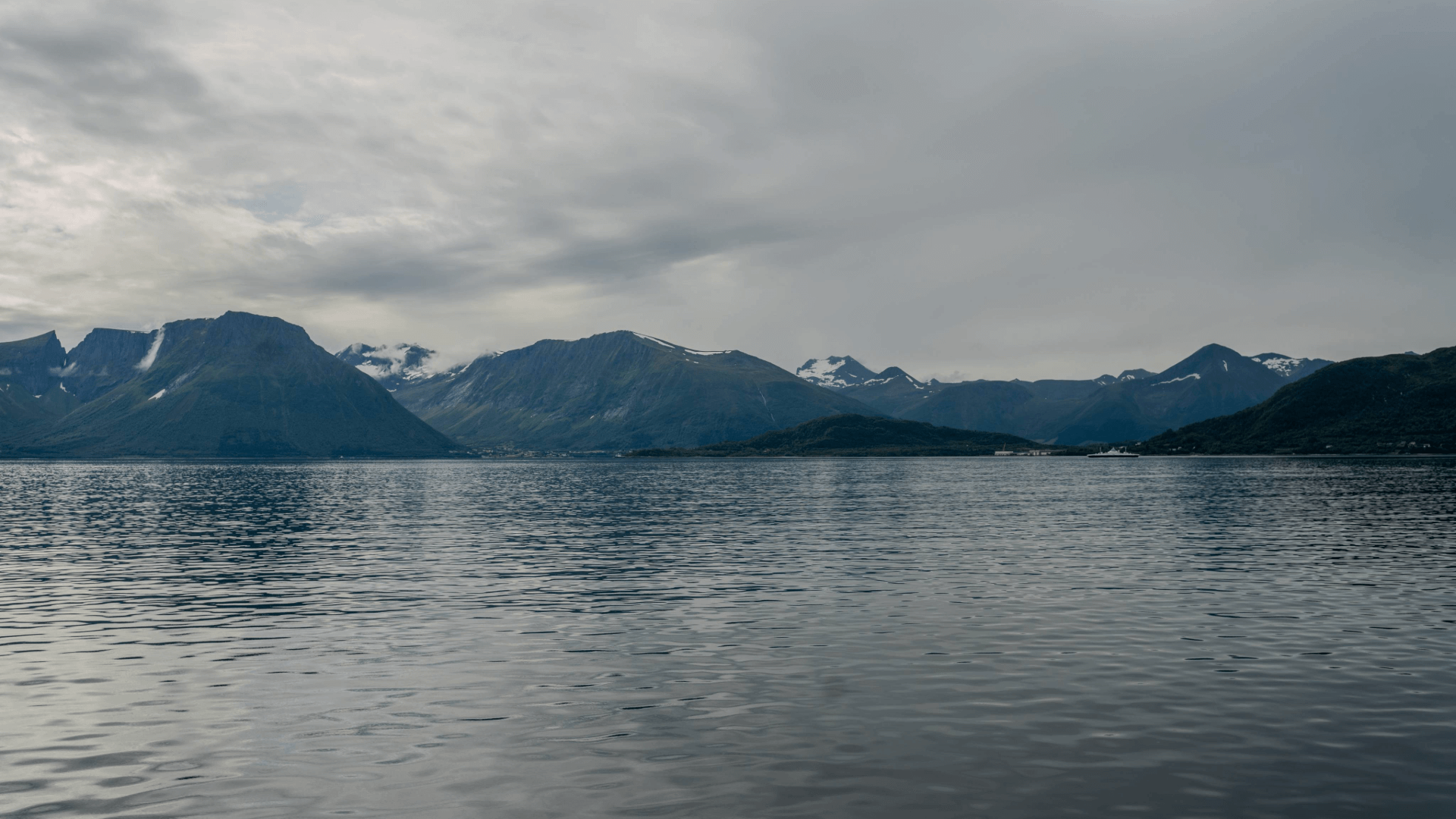Day Two of the Fish & Chip Study Program in Ålesund
Posted by Stelios on 24th Jul 2024 Reading Time:
This morning, we were all enthusiastic as we made our way to the port, where the crew of the Østerfjord awaited us. The Østervold family, led by Christian and Marlen Haugland Østervold, welcomed us warmly, and it was evident how passionate they were about their work. However, don't be fooled—this is a significant business operation.

Ryan, Victoria, I, and the Østervold family toured the ship. It was fascinating to see the level of detail and technological advancement that has gone into making the Østerfjord such an efficient and environmentally friendly vessel. I chatted with Lars, the Captain, who shared insights into the ship's hybrid propulsion system and its advanced fishing sonars and chart plotters. He explained how the vessel's main engine, auxiliary engines, and battery pack work together in different modes to minimise fuel consumption. Lars also highlighted the importance of using environmentally friendly fishing methods like longline and Danish seine, depending on the conditions of the fishery area.
We delved into various aspects of the ship's operations. Lars explained that a typical fishing trip lasts about four weeks, involving meticulous preparation, including optimising fishing gear and supplies. The captain decides on the target fish species, such as cod, haddock, or saithe, and the fishing area. Once the vessel reaches the fishing grounds, the catch processing begins immediately and continues until the vessel is fully loaded. A crew change occurs at the end of each trip.
Lars also discussed the challenges posed by the reduction in cod quotas for 2025, which is set to decrease by 30% based on ocean researchers' studies of different year classes. He acknowledged that this significant reduction would require the Østerfjord to adapt by fishing more efficiently and potentially reducing the number of fishing days. Despite these challenges, Lars emphasised the importance of the quota system for planning effective fishing operations and maintaining profitability. The primary sales markets for their catch include England, Norway, China, and the USA.
Additionally, Lars detailed the decision-making process for producing headless and gutted (H&G) fish versus fillets. This involves comparing prices and calculating which option yields the most profit. While fillet production is more labour-intensive and costly, sometimes producing fillets on small margins is necessary to maintain a market presence.

The vessel's hybrid propulsion system includes a Rolls-Royce Bergen main diesel engine with a rated output of 2,560 kW, two Yanmar generator sets, a 500kWh battery pack, a propeller and thrusters from Schottel, and a steering system and rudder supplied by Kongsberg Maritime. The onboard facilities include a moonpool and accommodation spaces for 23 personnel, ensuring safe fishing operations in all weather conditions by reducing the need for crew members to be out on deck.
We sailed through the stunning Norangsfjorden and Hjørundfjorde. The scenery was breathtaking, with towering mountains that reminded one of a grander version of Scotland. Standing atop the ship, feeling the cold air and taking in the view, was a moment to remember. I even braved my fear of heights to get into a small boat for some exterior shots of the Østerfjord, with Sophie Witts from The Caterer lending a helpful hand.

After departing the ship, our group split up; some went to a brewery, while others, including myself, Zohaib Hussain, Tommy and Jamie Russo, and John Evans, opted for a sauna. The sauna was blistering at 65°C, and we were supposed to jump into cold water for a dip. However, my keen threat detection spotted jellyfish, and I valiantly saved everyone from a potential sting—except for Tommy, who managed to scrape his shin on the ladder.
That evening, we dined at Bro Kystgastronomi (Coastal Gastronomy), located just behind "probably the best fish and chip shop in the world." My table included Bojana Dos Santos, Reece Head, Zohaib Hussain, Marcus French, and Sophie Witts. We had a fantastic time filled with laughter, mostly at my expense, thanks to Reece.

The meal was a three-course delight with a few twists. We started with a snack of klippfish skin, fermented lemon mayonnaise, avruga caviar, and dulce seaweed, followed by fermented potato sourdough bread with Norwegian whipped Røros butter, leek oil, and tørrfisk (dried cod). The potato bread and whipped butter were simply divine. For starters, we had what they called a Norwegian taco—Langoustine from Misund on potato flatbread with oxalis, ground elder, and gooseberries, accompanied by tarragon mayonnaise, buttermilk, and langoustine barbecue sauce. The main course was Redfish with green asparagus and turnip, finished with a white fermented asparagus butter sauce. Finally, dessert was Svele, a small pancake with brown butter ice cream, brown cheese toffee, and blackcurrants.
The meal was magnificent, the service impeccable, and the company delightful. It was a perfect end to a day filled with learning, adventure, and laughter.

